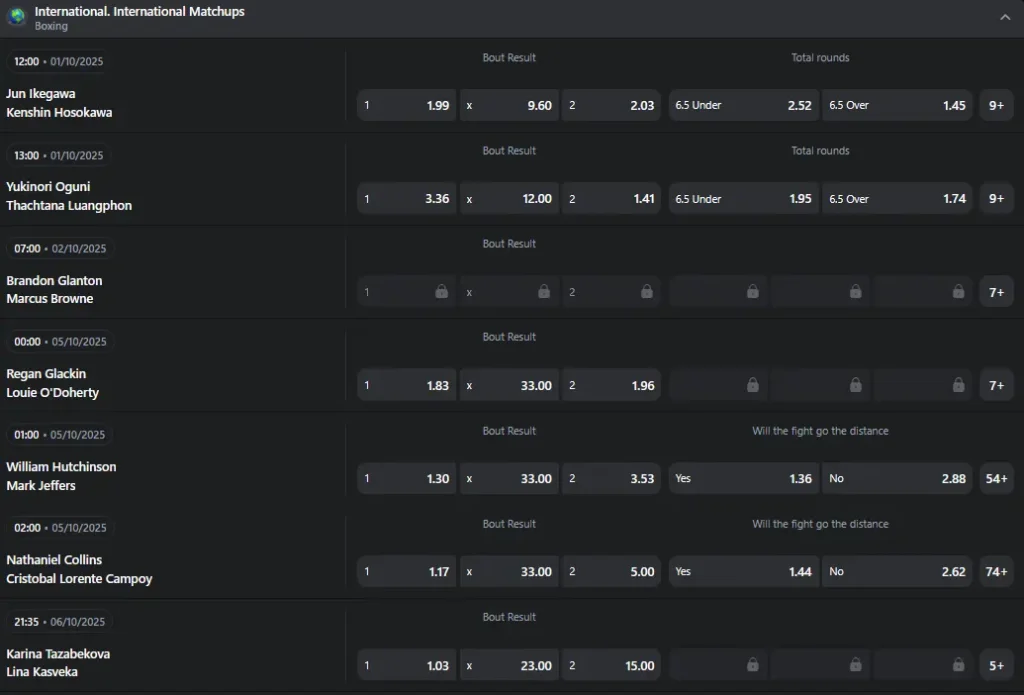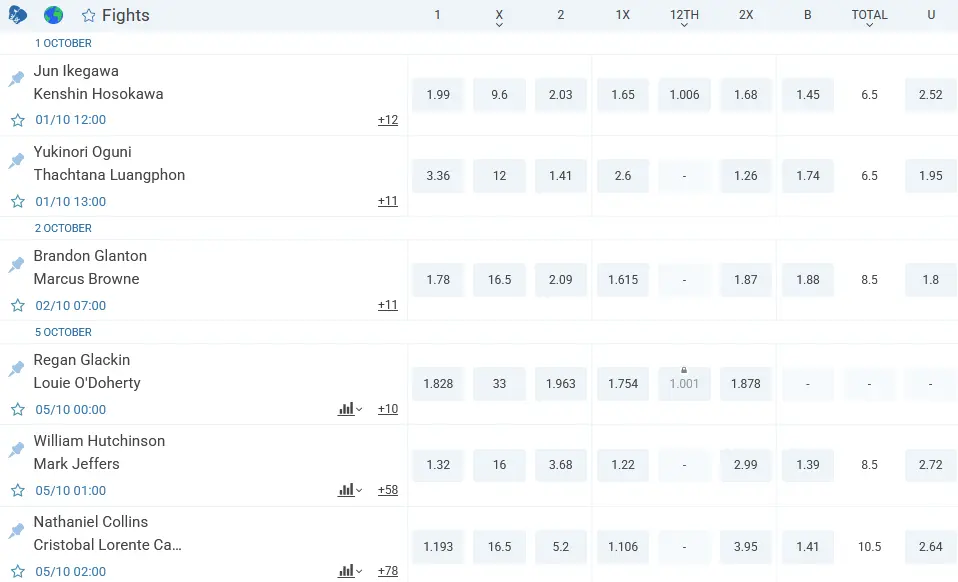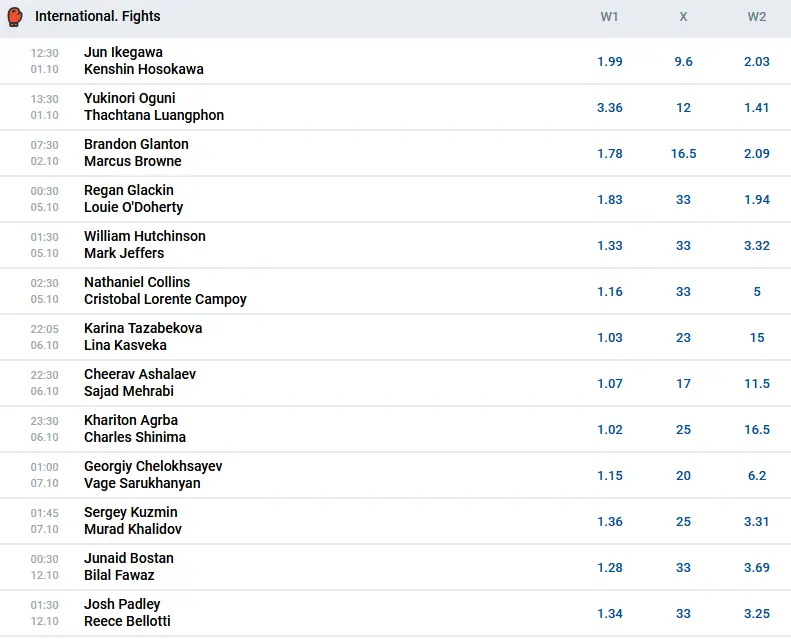Boxing Wagering: Strategic Combat Analysis
Boxing represents one of the most compelling individual sports for analytical wagering, combining physical prowess with tactical intelligence and psychological warfare. The sport’s transparent scoring systems, measurable performance metrics, and dramatic momentum shifts create numerous opportunities for dedicated analysts who understand fighter psychology, technical execution, and strategic adaptation throughout different phases of combat.
Fundamentals of Boxing Analysis
Professional boxing analysis requires understanding the complex interaction between physical attributes, technical skills, and mental preparation that determines competitive outcomes. Unlike team sports, boxing eliminates external variables while intensifying individual performance factors that directly influence fight results.

Boxing Betting
Physical condition assessment forms the foundation of boxing analysis as endurance, strength, and recovery capability determine performance sustainability across multiple rounds. Fighters approaching peak physical condition typically demonstrate improved punch output, defensive movement, and late-round effectiveness.
Technical skill evaluation encompasses striking accuracy, defensive positioning, ring movement, and tactical adaptation that separate elite fighters from lower-tier competitors. Understanding technical proficiency helps predict how fighters perform against different opponent styles and strategic approaches.
Fighting style compatibility creates predictable matchup dynamics as certain stylistic combinations naturally favor one competitor over another regardless of individual skill levels. Pressure fighters often struggle against mobile counter-punchers while technical boxers may falter against aggressive brawlers.
Training camp analysis reveals preparation quality through sparring partner selection, strength conditioning, and tactical focus that affects fight night performance. Well-prepared fighters typically demonstrate superior conditioning and strategic execution compared to those with inadequate preparation.
Age and experience curves affect performance trajectories as fighters typically improve through their twenties before declining in their thirties, though individual patterns vary significantly based on fighting style and career management.
Career management evaluation examines how fighters select opponents, manage training intensity, and balance activity levels with recovery needs that influence long-term performance consistency.
Weight Division Characteristics
| IBA Men's World Boxing Championships | Commonwealth Games Boxing | European Amateur Boxing Championships | National Golden Gloves |
| USA Boxing National Championships | World Boxing Championships | IBA Women's World Boxing Championships | African Boxing Championships |
| AIBA Youth World Championships | Olympic Games Boxing | Asian Games Boxing | World Boxing Cup: GB Open |
| English National Amateur Championships | Golden Gloves of America | Gee Bee International Tournament | U.S. Armed Forces Boxing Championships |
Heavyweight Division
Heavyweight boxing features the sport’s most unpredictable outcomes due to knockout power that can dramatically alter fight trajectories within single exchanges. The absence of weight cutting creates different physical dynamics than smaller divisions.
Power analysis becomes crucial as heavyweight punchers possess fight-ending capability throughout entire contests, making defensive lapses more costly than in lighter divisions.
Conditioning requirements differ from smaller divisions as heavyweights typically engage in slower-paced but more physically demanding battles that test different aspects of fitness preparation.
Experience advantages prove more significant as heavyweight fighters often compete successfully into their late thirties when tactical knowledge compensates for declining physical attributes.
Light Heavyweight Through Middleweight
Middle divisions feature optimal combinations of power, speed, and endurance that create the most technically skilled competitive environments in professional boxing.
Athletic prime analysis helps identify fighters approaching peak performance as middle-division competitors typically demonstrate optimal physical capabilities during specific career phases.
Style diversity flourishes in middle divisions as various tactical approaches remain viable without extreme physical advantages or disadvantages that dominate other weight classes.
Welterweight Through Lightweight
Lower weight divisions emphasize speed, technical precision, and tactical execution while maintaining sufficient power to create knockout opportunities throughout fights.
Conditioning advantages become more pronounced as lighter fighters typically maintain higher work rates across twelve-round contests requiring superior cardiovascular preparation.
Technical skill gaps prove more decisive as reduced knockout power means fights often depend on accumulating tactical advantages rather than single decisive moments.
Featherweight and Below
Smaller divisions feature the highest technical skill levels and sustained pace throughout entire contests while reducing knockout probability to emphasize tactical boxing.
Volume punching capability determines success as lower-weight fighters typically win through consistent activity rather than isolated power shots.

Boxing 1Win
Boxing Match Analysis Categories
Style Matchup Evaluation
Understanding how different fighting styles interact creates the foundation for successful boxing analysis as certain stylistic combinations produce predictable competitive dynamics.
Pressure fighters who constantly move forward typically struggle against mobile counter-punchers who use movement and timing to avoid sustained pressure while creating scoring opportunities.
Technical boxers relying on defensive positioning and accurate punching often experience difficulties against aggressive brawlers who close distance and engage in sustained exchanges.
Counter-punchers depending on opponent aggression to create opportunities may struggle against cautious boxers who limit their offensive output and avoid providing counter-punching opportunities.
Southpaw analysis requires understanding how left-handed fighters create tactical advantages against orthodox opponents through stance positioning and angle creation.
Physical Attribute Assessment
Physical advantages often determine outcomes when skill levels remain relatively equal, making attribute analysis crucial for accurate fight prediction.
Reach advantages provide significant benefits through increased jabbing distance and defensive spacing that can control fight pace and distance throughout contests.
Height differentials affect tactical approaches as taller fighters typically utilize outside boxing while shorter opponents seek inside positioning to neutralize reach advantages.
Power differential analysis helps predict knockout probability and tactical approach as fighters with significant power advantages often pursue aggressive strategies while opponents focus on survival and point accumulation.
Speed advantages manifest in various forms including hand speed, foot movement, and reaction time that affect both offensive and defensive effectiveness throughout fights.
Preparation Quality Analysis
Training camp evaluation reveals fighter preparation through visible conditioning, sparring footage, and tactical adjustments that indicate fight readiness and strategic focus.
Sparring partner selection demonstrates camp preparation quality as fighters utilizing partners who replicate opponent styles typically demonstrate better tactical preparation.
Conditioning assessment examines cardiovascular fitness, strength levels, and weight management that directly impact performance sustainability throughout entire contests.
Injury management during preparation affects fight performance as undisclosed or inadequately healed injuries often manifest during combat through reduced activity or altered movement patterns.

Boxing Fight Mostbet
Popular Boxing Betting Markets
Match
Mostbet
1xBet
1Win
Fighter 1
Fighter 2
Fighter 1
Fighter 2
Fighter 1
Fighter 2
Floyd Masson vs Johan Linde
1.05
12.5
1.05
12.5
1.05
12.50
Danny Keating vs Sachin Nautiyal
1.02
12.4
1.02
12.4
1.02
12.40
Lachlan O'Shea vs Dharringarra Trewhella
3.45
1.45
3.45
1.45
3.45
1.45
Jacob Ng vs Rikki Naito
1.23
5.06
1.23
5.06
1.23
5.06
Ken Aitken vs Sonny Knight
1.14
5.91
1.143
5.91
1.14
5.91
Liam Wilson vs Jorge Santana
1.03
11.2
1.038
11.2
1.04
11.20
Fighter Victory Methods
Boxing offers multiple victory prediction options that require understanding different path scenarios and their relative probability based on fighter characteristics and matchup dynamics.
Knockout betting requires assessing both fighters’ punching power and defensive capabilities as knockout outcomes depend on both offensive force and defensive vulnerabilities.
Decision victory predictions analyze fighters’ likelihood of winning tactical battles across multiple rounds without achieving knockouts or stoppages.
Technical decision markets account for fight stoppages due to accidental fouls, cuts, or other circumstances that prevent completion while determining winners through scorecards.
Round Betting Analysis
Round-specific predictions capitalize on detailed fight flow analysis and understanding of how different phases typically develop based on fighter styles and strategies.
Early round knockout analysis focuses on aggressive fighters facing defensively vulnerable opponents in situations where quick finishes seem probable.
Late round prediction markets appeal to analysts who understand conditioning differentials and how fighter stamina affects performance in championship rounds.
Total Rounds Markets
Fight duration betting requires analyzing factors that influence contest length including fighter durability, power levels, and tactical approaches that affect knockout probability.
Over/under round totals reflect expected fight competitiveness as closely matched opponents typically produce longer contests while skill disparities create shorter fights.
Scorecards and Decision Analysis
Professional boxing judging creates additional wagering opportunities through understanding scoring criteria and judge preferences that influence decision outcomes.
Unanimous decision betting requires analyzing fights where one fighter demonstrates clear superiority across multiple performance categories throughout most rounds.
Split decision markets appeal when fights feature close tactical battles where different judging interpretations could reasonably favor either competitor.

Boxing 1xBet
Advanced Boxing Analysis Techniques
Statistical Performance Modeling
Modern boxing analysis benefits from comprehensive statistical evaluation that measures various performance aspects across different competitive scenarios.
Punch statistics including output, accuracy, and power percentage provide quantitative measures of offensive effectiveness that correlate with success rates.
Defensive metrics encompass punch avoidance, blocking efficiency, and counter-punching success that indicate protective capability and tactical intelligence.
Activity level consistency reveals stamina management and tactical discipline as fighters maintaining steady output typically demonstrate superior conditioning preparation.
Psychological Factor Assessment
Mental aspects prove crucial in individual combat sports as confidence, motivation, and pressure handling directly affect physical performance and tactical execution.
Confidence level evaluation examines recent performance trends and personal circumstances that affect mental state entering competitive situations.
Pressure response analysis reveals how fighters handle different stress levels including crowd pressure, title implications, and personal adversity that affect performance.
Motivation assessment considers factors including financial incentives, career implications, and personal circumstances that influence training dedication and fight performance.
Career Trajectory Analysis
Understanding where fighters exist within their career arcs helps predict future performance trends and identify value opportunities in long-term markets.
Prime identification helps recognize fighters approaching peak performance periods when physical attributes align with experience accumulation for optimal competitive effectiveness.
Decline recognition reveals when fighters begin experiencing reduced capabilities that create upset opportunities when matched against improving opponents.

Boxing Mostbet
Weight Class Specific Strategies
Heavyweight Analysis Focus
Heavyweight boxing requires specialized analytical approaches that account for unique division characteristics including knockout power, conditioning demands, and experience factors.
Knockout power assessment proves more critical than in lighter divisions as heavyweight punchers maintain fight-ending capability throughout entire contests.
Conditioning evaluation focuses on different fitness aspects as heavyweight battles typically feature lower pace but higher physical demands per exchange.
Middle Division Assessment
Welterweight through light heavyweight divisions feature optimal athletic combinations that create the most technically sophisticated competitive environments.
Athletic balance analysis examines how fighters combine speed, power, and endurance in optimal proportions for middle division success.
Technical skill evaluation proves crucial as middle divisions feature sufficient depth that tactical advantages often determine outcomes between well-matched opponents.
Lower Weight Analysis
Featherweight and below emphasize technical precision and sustained activity while reducing knockout variables that dominate heavier divisions.
Volume analysis becomes paramount as lower-weight success typically depends on consistent punch output rather than isolated power moments.
Technical precision evaluation focuses on accuracy and defensive positioning that determine success when power advantages become minimal.



 Kieran Aldridge
Kieran Aldridge
